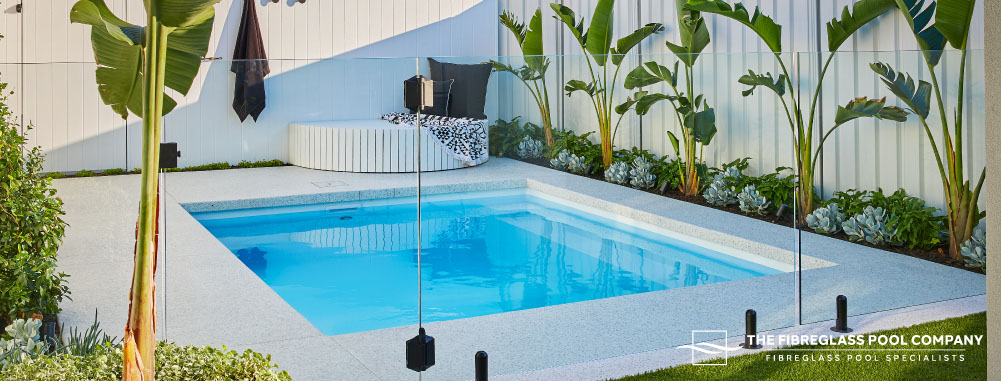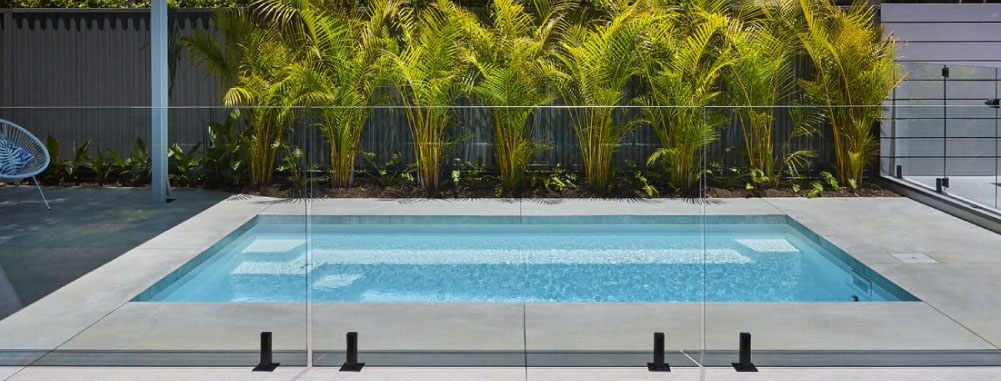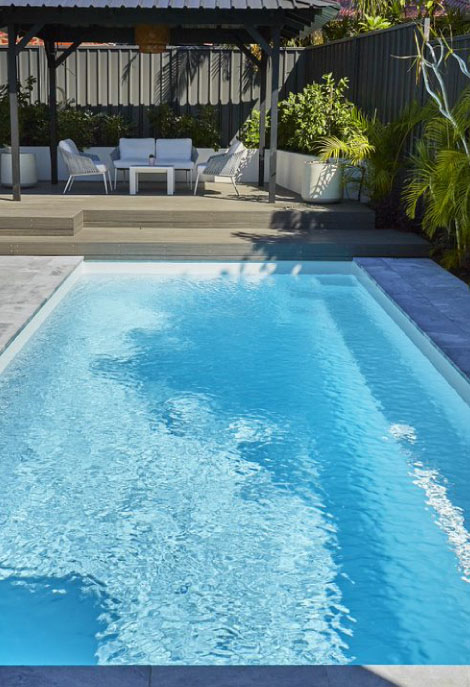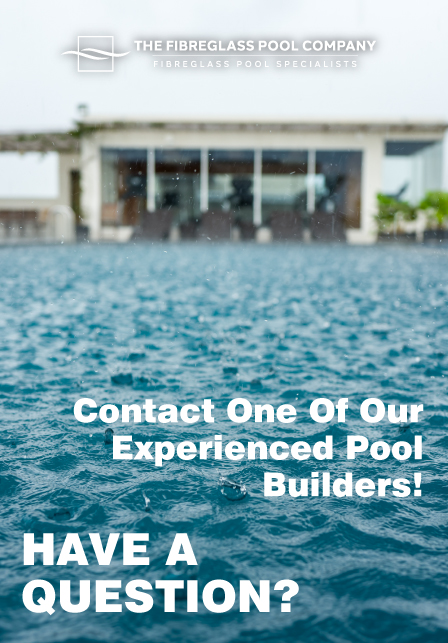The summer months in Australia are a time of the year when Aussies enjoy being in the water. It could be at a beach in a coastal province or a prominent swimming club in the city. Swimming is an activity that Aussies not only enjoy but celebrate. Legends in the likes of Gould and Ian Thorpe stand as indelible examples.

If some pool time is so precious and enjoyable to you, why not create that experience right at home? Believe it or not, a swimming pool can be a luxurious and value-enhancing addition to your home, if it has an open backyard and ample compound space. If you are considering this idea, then you should definitely do a cost-benefit analysis. It can be an expensive affair so you have to take conscious, deliberate steps.
In-ground swimming pools are perhaps the most popular type of pool you will find in places with flat terrain, while above-ground swimming pools are common on slopes and uneven terrains. But there are also other types of swimming pools that you can consider. Let’s take you through these types in this blog, along with the average cost you will most likely incur in Australia.
Concrete swimming pool
A concrete pool shell is built by using a mixture of cement, water, gravel or stone. The process is different from the traditional method, in which concrete is used. The finishing of the pool shell is done with tile, aggregate, or plaster, making it visually appealing, comfortable, and nice to walk on.
A concrete swimming pool is quite design-friendly, but it comes at an increased cost. You can calculate the starting cost point for building a concrete swimming pool in the range of AUD $25,000-$30,000. The top-end swimming pools may not have a price ceiling. So, it can be difficult to pinpoint the maximum cost point for building such a pool.
There are different factors that determine the cost of building a concrete swimming pool in your house. The desired size of the pool, the spaciousness of your backyard, soil quality, water supply, and your home’s terrain are key influencers of installation and labour costs associated with a concrete swimming pool.

Fibreglass swimming pool
An impressive alternative to a concrete pool is a fibreglass pool, which is created from a shell of reinforced fibreglass which is coated with a protective gel. The shell is made off-site and is then installed in a single piece in your home’s site by excavating a hole the size of your pool in the ground. These pools don’t have liners, which is a characteristic of vinyl swimming pools.
Building a fibreglass swimming pool is cheaper than a concrete swimming pool. The starting point for its installation cost is around AUD $25,000 and it can go up to AUD $50,000 depending on several factors. Access to your pool area is paramount because any issue with it can shoot up the cost. Backyards that lack access to equipment and materials often require hired cranes, which can increase the cost. So, it’s important to keep these factors in mind while building a fibreglass swimming pool.
There are both upsides and downsides to a fibreglass swimming pool. Compared to a vinyl pool, a fibreglass pool requires less maintenance and repair work, meaning your long-term cost will be low. However, they come in pre-set sizes and shapes so you don’t get much flexibility to design them as you get in a concrete pool.
Vinyl swimming pool
A vinyl pool is another swimming pool option that you can go for. It comes with a custom-made vinyl sheet or liner between the pool structure and the water. The liner of these pools is made from plastic or metal frames. The prefabricated supporting panels and walls of the pool shell are made of steel, plastic, or aluminium, which are joined to the liner’s frame. Such a swimming pool can be both in-ground and above-ground.
A vinyl swimming pool is a more permanent option compared to other types of pools, but it’s still affordable to build. The starting cost point for building a vinyl swimming pool is about AUD $10,000. The liner has an approximate lifespan of 6 to 10 years, so you might have to bear frequent repairing costs—something that makes it less cost-effective than concrete and fibreglass swimming pools.
You should be mindful of one downside of a vinyl swimming pool; they are less durable and need to be replaced completely when damaged. Most people view these swimming pools as a discounted edition of a traditional swimming pool. However, you can save thousands of dollars on installation and labour costs by building it as an above-ground pool.

Modular swimming pool
If you are looking for a swimming pool option that is permanent and does not require excavation in your backyard, then a modular pool is what you should look at. Sometimes also called plunge pools, a modular swimming pool is built by assembling different components and parts on site. They can come in a variety of shapes and sizes, but they are typically smaller than concrete and fibreglass swimming pools.
The cost of installing a modular swimming pool in your backyard can range between AUD $20,000 to $40,000. The incorporation of additional features can increase the cost to some extent. A modular swimming pool is designed as a plug-and-play pool—something that is quick to install and enjoy. They are far less expensive to install compared to other types of pools because they require less costly building materials.
The best part about installing a modular pool is that you don’t have to level your yard to excavate the ground, meaning you save thousands on labour costs. The overall cost of installation will depend on the style and materials you choose. A modular pool usually has a long lifespan, which can keep your regular maintenance costs low compared to an above-ground vinyl swimming pool.
Conclusion
These are some of the most popular swimming pool options you can choose from as a homeowner in Australia. The cost will certainly differ, but you can keep it low with proper planning. The pool builder you work with also has a huge influence on the cost of building a swimming pool at home. So, make sure you work with a company that’s reliable and affordable.
The summer months in Australia are a time of the year when Aussies enjoy being in the water. It could be at a beach in a coastal province or a prominent swimming club in the city. Swimming is an activity that Aussies not only enjoy but celebrate. Legends in the likes of Gould and Ian Thorpe stand as indelible examples.

If some pool time is so precious and enjoyable to you, why not create that experience right at home? Believe it or not, a swimming pool can be a luxurious and value-enhancing addition to your home, if it has an open backyard and ample compound space. If you are considering this idea, then you should definitely do a cost-benefit analysis. It can be an expensive affair so you have to take conscious, deliberate steps.
In-ground swimming pools are perhaps the most popular type of pool you will find in places with flat terrain, while above-ground swimming pools are common on slopes and uneven terrains. But there are also other types of swimming pools that you can consider. Let’s take you through these types in this blog, along with the average cost you will most likely incur in Australia.
Concrete swimming pool
A concrete pool shell is built by using a mixture of cement, water, gravel or stone. The process is different from the traditional method, in which concrete is used. The finishing of the pool shell is done with tile, aggregate, or plaster, making it visually appealing, comfortable, and nice to walk on.
A concrete swimming pool is quite design-friendly, but it comes at an increased cost. You can calculate the starting cost point for building a concrete swimming pool in the range of AUD $25,000-$30,000. The top-end swimming pools may not have a price ceiling. So, it can be difficult to pinpoint the maximum cost point for building such a pool.
There are different factors that determine the cost of building a concrete swimming pool in your house. The desired size of the pool, the spaciousness of your backyard, soil quality, water supply, and your home’s terrain are key influencers of installation and labour costs associated with a concrete swimming pool.

Fibreglass swimming pool
An impressive alternative to a concrete pool is a fibreglass pool, which is created from a shell of reinforced fibreglass which is coated with a protective gel. The shell is made off-site and is then installed in a single piece in your home’s site by excavating a hole the size of your pool in the ground. These pools don’t have liners, which is a characteristic of vinyl swimming pools.
Building a fibreglass swimming pool is cheaper than a concrete swimming pool. The starting point for its installation cost is around AUD $25,000 and it can go up to AUD $50,000 depending on several factors. Access to your pool area is paramount because any issue with it can shoot up the cost. Backyards that lack access to equipment and materials often require hired cranes, which can increase the cost. So, it’s important to keep these factors in mind while building a fibreglass swimming pool.
There are both upsides and downsides to a fibreglass swimming pool. Compared to a vinyl pool, a fibreglass pool requires less maintenance and repair work, meaning your long-term cost will be low. However, they come in pre-set sizes and shapes so you don’t get much flexibility to design them as you get in a concrete pool.
Vinyl swimming pool
A vinyl pool is another swimming pool option that you can go for. It comes with a custom-made vinyl sheet or liner between the pool structure and the water. The liner of these pools is made from plastic or metal frames. The prefabricated supporting panels and walls of the pool shell are made of steel, plastic, or aluminium, which are joined to the liner’s frame. Such a swimming pool can be both in-ground and above-ground.
A vinyl swimming pool is a more permanent option compared to other types of pools, but it’s still affordable to build. The starting cost point for building a vinyl swimming pool is about AUD $10,000. The liner has an approximate lifespan of 6 to 10 years, so you might have to bear frequent repairing costs—something that makes it less cost-effective than concrete and fibreglass swimming pools.
You should be mindful of one downside of a vinyl swimming pool; they are less durable and need to be replaced completely when damaged. Most people view these swimming pools as a discounted edition of a traditional swimming pool. However, you can save thousands of dollars on installation and labour costs by building it as an above-ground pool.

Modular swimming pool
If you are looking for a swimming pool option that is permanent and does not require excavation in your backyard, then a modular pool is what you should look at. Sometimes also called plunge pools, a modular swimming pool is built by assembling different components and parts on site. They can come in a variety of shapes and sizes, but they are typically smaller than concrete and fibreglass swimming pools.
The cost of installing a modular swimming pool in your backyard can range between AUD $20,000 to $40,000. The incorporation of additional features can increase the cost to some extent. A modular swimming pool is designed as a plug-and-play pool—something that is quick to install and enjoy. They are far less expensive to install compared to other types of pools because they require less costly building materials.
The best part about installing a modular pool is that you don’t have to level your yard to excavate the ground, meaning you save thousands on labour costs. The overall cost of installation will depend on the style and materials you choose. A modular pool usually has a long lifespan, which can keep your regular maintenance costs low compared to an above-ground vinyl swimming pool.
Conclusion
These are some of the most popular swimming pool options you can choose from as a homeowner in Australia. The cost will certainly differ, but you can keep it low with proper planning. The pool builder you work with also has a huge influence on the cost of building a swimming pool at home. So, make sure you work with a company that’s reliable and affordable.


